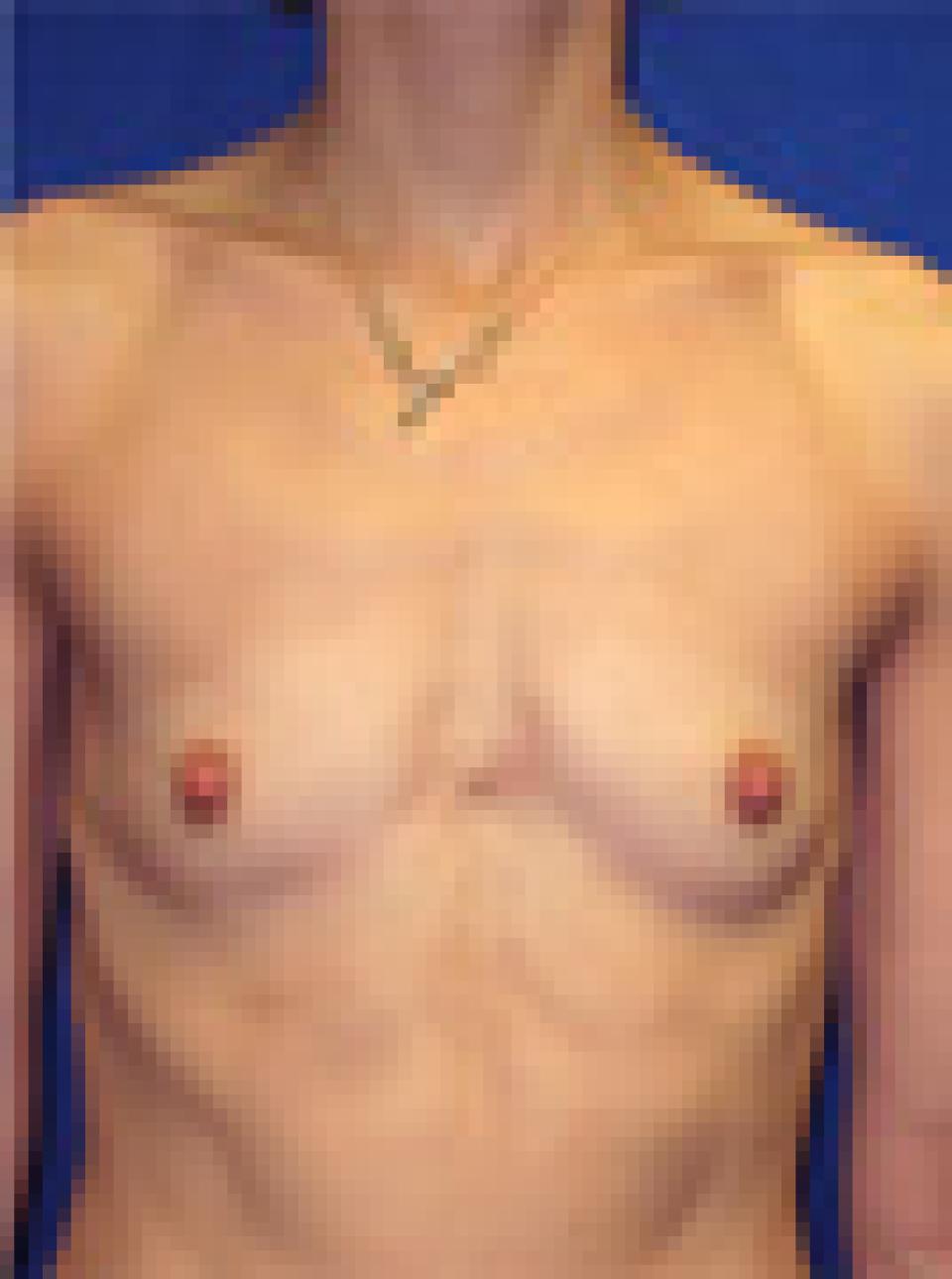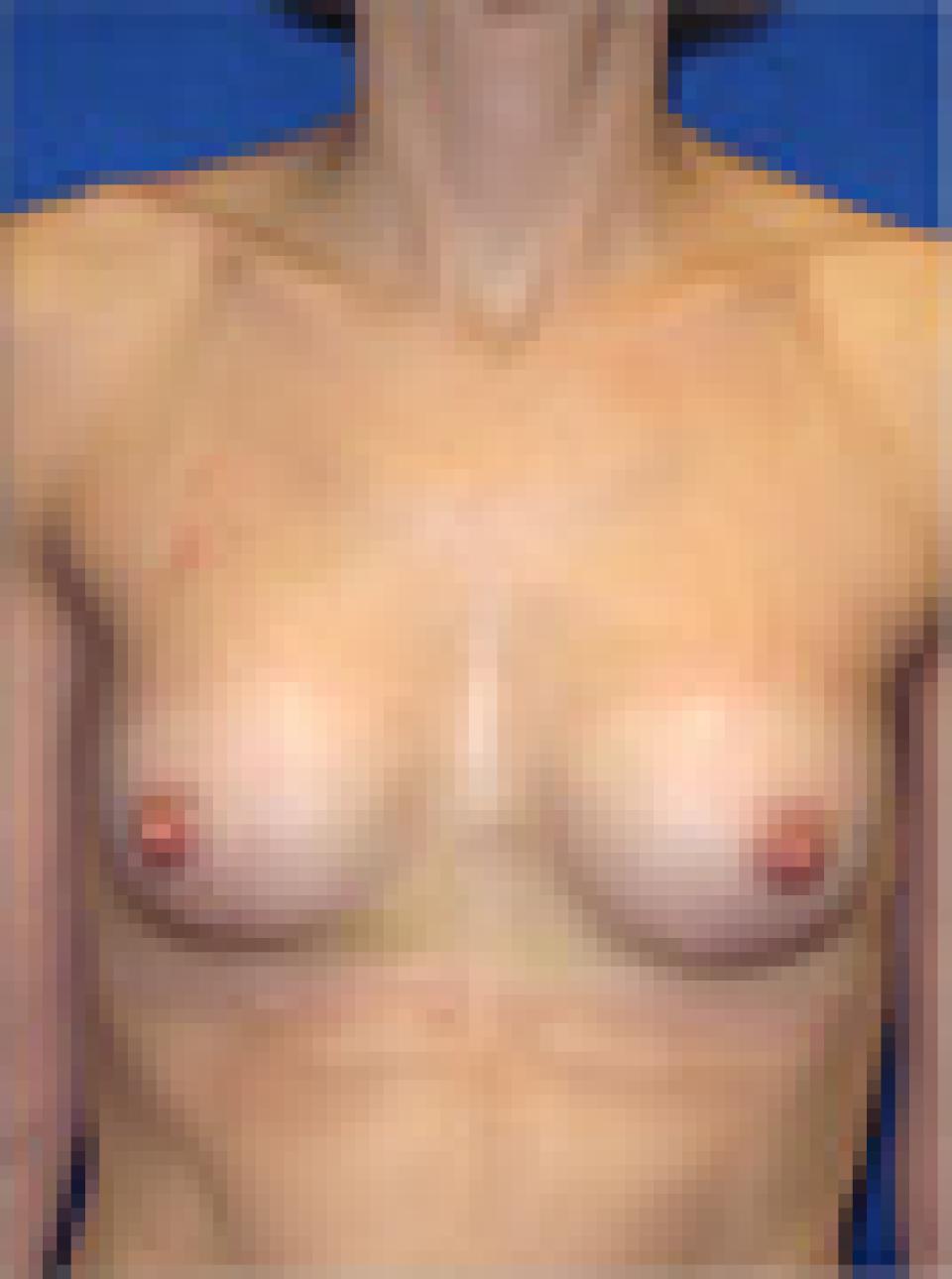Inframammary Fold
This is the lower margin of where breast and chest meet. Called by various names, inframammary fold (IMF), inframammary crease, inframammary ligament and inframammary line, this is the reflection point where the skin of the lower surface of the breast turns down over the chest beneath (distal to) the breast. It is an important landmark for the surgeon practising breast reconstruction in particular, but requires also the attention of the surgeon in breast augmentation.
Anatomic dissection and histologic microscopy studies have shown this to be a recognizable structure where the subcutaneous fascia of the breast is adherent and comingles with the fibers of the deep pectoral fascia, identifying this as a fixed zone which mandates the attention of the breast surgeon.
The suggestion has been made that there is a “ligament” in this fold, and that has not been substantiated.
 before
before
 after
after
This 39 year old woman had a breast lift or mastopexy using a short scar technique which leaves behind scars in the shape of a “lollipop.” This technique, which I prefer to use, avoids any scars in the cleavage or on the side of the body beneath the arm. This makes swimsuit selection much easier if avoiding visible scars while wearing the swimsuit is a goal.
Candidates for a breast lift or mastopexy must have enough breast tissue to rearrange into a new breast shape that is typically shorter and rounder. If there is not enough breast tissue to rearrange and only excess skin, a situation that can occur when breasts involute following pregnancy, then an implant will be necessary to achieve a natural breast shape following surgery.
 before
before
 after
after
These photographs depict a 41 year old woman whose goals after surgery were to have more shapely but not overly large breasts, as her frame was small. She underwent breast augmentation with 158 cc smooth, round, silicone implants.
The implants were placed beneath her pectoralis muscles through an incision in the lower fold of the breast. The post-operative photographs depict her at just under 2 months after surgery. She wears a small B cup bra after surgery.
 before
before
 after
after
This 35 year old woman reached her plateau weight after losing 56 pounds following bariatric surgery. She had breast lift or mastopexy using a short scar technique which leaves behind scars in the shape of a “lollipop.” Some breast lifts or mastopexies are performed using a technique that results in scars that look like an “anchor,” but I prefer to use this shorter scar technique because scars are never visible in the cleavage nor on the side of the body beneath the arm. This makes swimsuit selection much easier.
This woman has a history of poor scar healing. It is relatively easy to see dark and thickened scars on her abdomen from her bariatric procedure. I feel that it is especially advantageous to avoid the “anchor” shaped scar in individuals whose scars do not heal well.
When performing a breast lift or mastopexy, very little breast tissue is removed. Instead, the existing breast tissue is rearranged so that the new breast shape is typically shorter and rounder than it was previously.
Performing a breast lift in an individual who has lost a great deal of weight is often very challenging. They tend to have an extreme amount of skin excess and relatively little breast tissue. As such, a great deal of skin must be removed while significant effort is made to preserve every bit of breast tissue possible to achieve a natural looking breast.
Questions Related to Inframammary Fold
Dr. Belsley's Philosophy of Breast Augmentation
When it comes to deciding what approximate breast size you wish to achieve, the best advice I can give you is that you should be guided by your physical frame. Indeed, you may in fact be limited by it. In my practice, I select implants based upon your chest measurements, the quality of your breast skin and the size of your breasts prior to surgery.
I perform breast augmentation through a peri-areolar or inframammary approach and I place that vast majority of implants at least partially beneath the pectoralis muscle. My patients are welcome to select either saline or silicone filled breast implants. Silicone filled implants can in some cases achieve a more natural feel and may be a particularly attractive option for women with less breast tissue prior to surgery.
More >>Dr. Belsley's Philosophy of Male Breast Reduction
Treatment for gynecomastia can be approached in several ways and is largely dependent upon the “type” of tissue in the chest that needs to be reduced. A physical examination is necessary to create a plan for treatment. Most of the time, I treat these individuals with a combination of ultrasonic liposuction and removal of glandular and breast tissue through a small incision on the border of the areola. Some individuals will be able to achieve excellent results with ultrasonic liposuction alone. Others, may require more extensive incisions. My goal is to give you a natural looking masculine shape that is well proportioned with the rest of your body using the shortest incision possible.
More >>